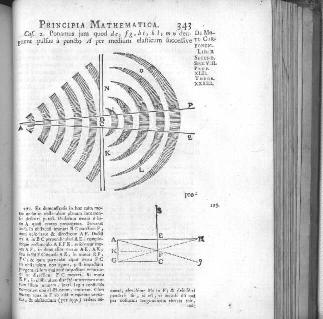Newton's book, Philosophiae naturalis principia mathematica, often called Principia for short, was completed by April 1686 and is one of the greatest pieces of scientific literature ever written. Much credit is deserved to Edmond Halley as his initial visit to Cambridge in the fall of 1684 reminded Newton of the work that needed to be completed regarding celestial mechanics. This visit prompted the writing of De motu and quickly lead to the writing of Principia (Cropper 30).
The Principia Title Page

http://www.arm.ac.uk/history/hist_pics.html
